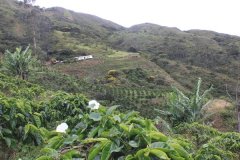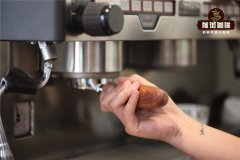Coffee basic what is decaffeinated coffee? How much caffeine is there in coffee?
Coffee beans, the seeds of tree fruit, naturally contain caffeine and have been used for centuries for their refreshing quality. So what's the difference between caffeinated coffee and decaffeinated coffee? How does our coffee compare in terms of caffeine content?
How much caffeine is there in coffee?
In the past, light roasting was thought to retain slightly more caffeine than dark roasting, but now most people think that caffeine is very stable throughout the roasting process, and the difference in caffeine is usually attributed to brewing. For example, coffee made in a French press-the coffee powder continues to be soaked in water after the end of the primary brewing cycle-will contain more caffeine than small espresso, albeit at a higher concentration.

Although the amount of caffeine varies depending on the degree of brewing and roasting, the natural caffeine, decaffeinated, can also be removed from coffee beans.
There are three general ways to extract caffeine from coffee: using organic chemical solvents (dichloromethane or ethyl acetate), carbon dioxide or water-also known as Swiss water. The caffeine content of the resulting coffee is only a fraction of that of regular coffee, removing at least 97% of the caffeine.
How to remove caffeine from coffee?
In the Swiss water treatment process, unroasted or "raw" coffee beans are washed and hydrated in pure local water and then introduced into the so-called raw coffee extract or GCE. Then caffeine ventures away from the beans and into GCE, where caffeine is trapped in a carbon filter and separated from GCE.
Does decaffeinated coffee or regular coffee suit you better?
The results of studies on whether coffee has any specific health benefits are contradictory, as are the results on the potentially harmful effects of coffee consumption. Consuming too much caffeine can lead to increased heart rate, anxiety, depression and difficulty sleeping at night. However, caffeine also has benefits, including increasing energy levels and reducing fatigue.
In the final analysis, we believe that decaffeinated coffee should be as enjoyable as regular coffee, especially because decaffeinated drinkers are more important than drinking coffee because of its taste.
Important Notice :
前街咖啡 FrontStreet Coffee has moved to new addredd:
FrontStreet Coffee Address: 315,Donghua East Road,GuangZhou
Tel:020 38364473
- Prev

How is the coffee delivered from the farm to the cup? What process does it take for coffee to be roasted?
Coffee grows best in countries near the equator. We usually divide these countries into three categories: central / South America, Africa and the Pacific. If you are in the United States, none of these places are particularly close, so today we will outline how coffee goes from the farm to your cup. This is often referred to as the supply chain, although the boutique coffee industry usually uses the term value chain, and we will use its physics
- Next

Espresso extraction process to make espresso pay attention to the details of espresso drinking
Espresso is a high concentration coffee extracted by an Italian coffee machine under pressure. it is the base of popular drinks in American, lattes and other cafes. In recent years, many coffee lovers have also been equipped with an espresso machine at home. Of course, it is not easy to extract qualified espresso. Today, let's share some tips for extracting espresso in front of the street. System
Related
- Beginners will see the "Coffee pull flower" guide!
- What is the difference between ice blog purified milk and ordinary milk coffee?
- Why is the Philippines the largest producer of crops in Liberia?
- For coffee extraction, should the fine powder be retained?
- How does extracted espresso fill pressed powder? How much strength does it take to press the powder?
- How to make jasmine cold extract coffee? Is the jasmine + latte good?
- Will this little toy really make the coffee taste better? How does Lily Drip affect coffee extraction?
- Will the action of slapping the filter cup also affect coffee extraction?
- What's the difference between powder-to-water ratio and powder-to-liquid ratio?
- What is the Ethiopian local species? What does it have to do with Heirloom native species?

